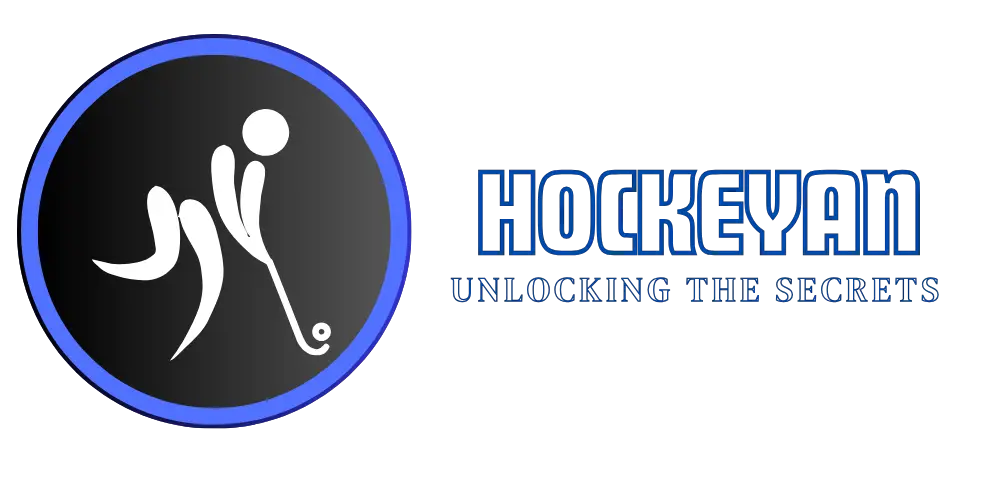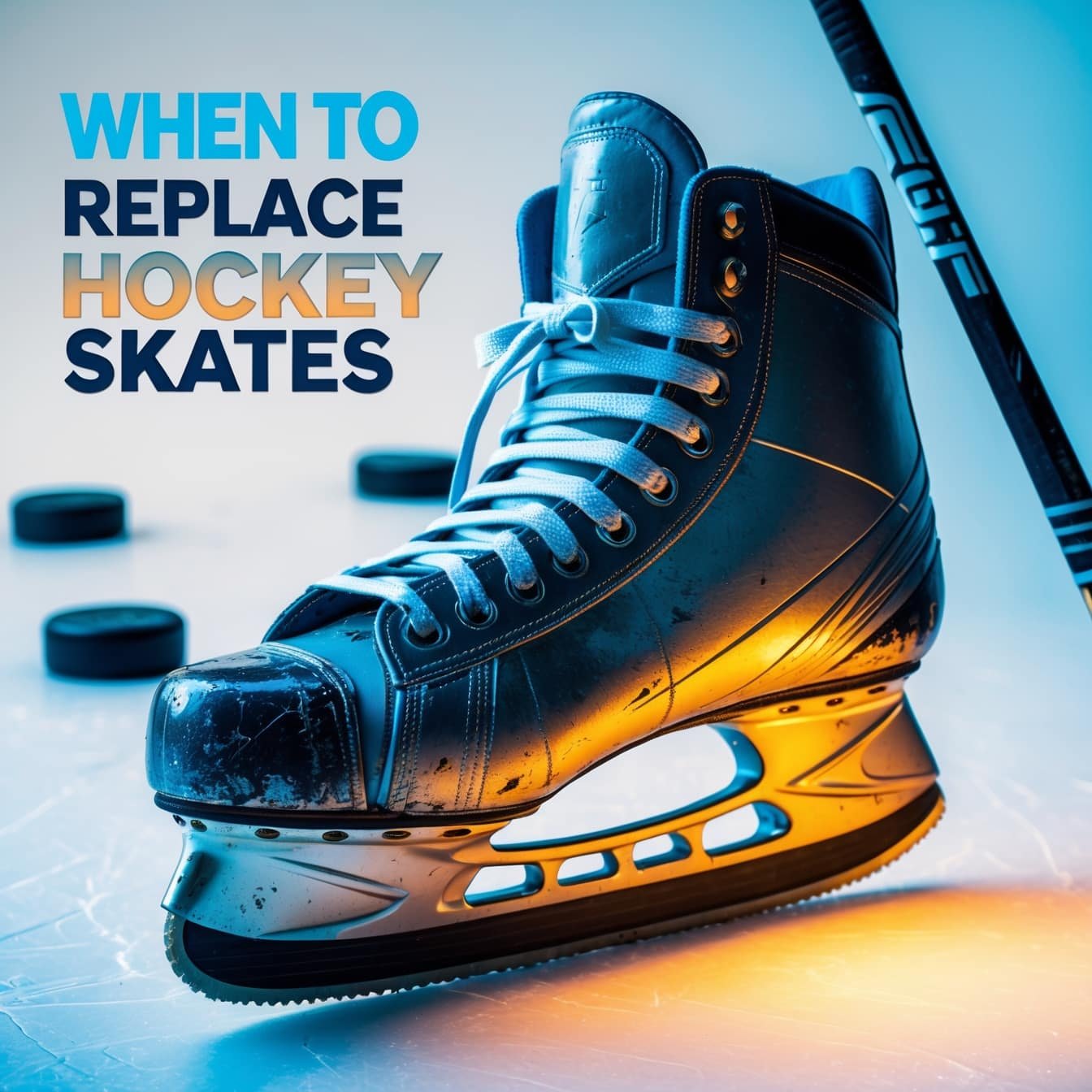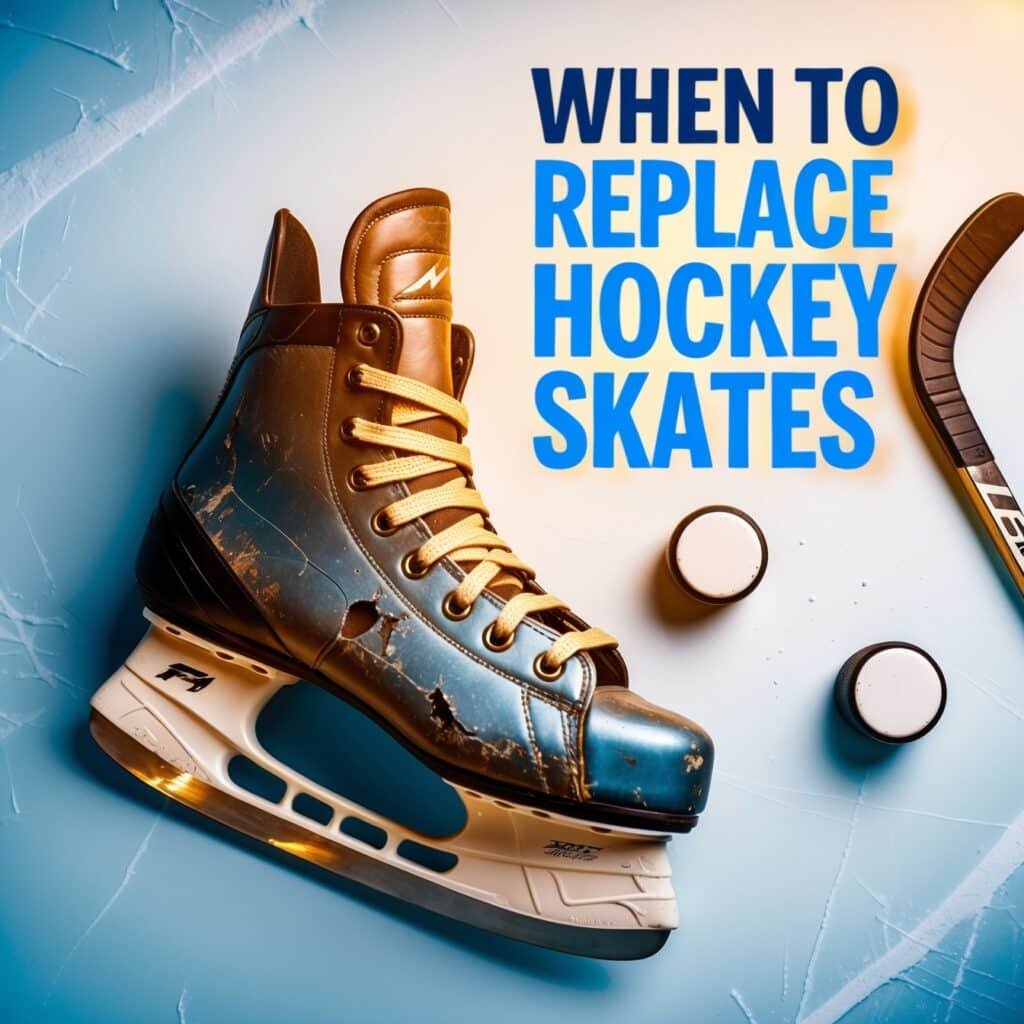When to Replace Hockey Skates? Knowing when to replace hockey skates is crucial for performance and safety. Worn-out skates can affect your game and increase injury risk.
Hockey skates endure a lot of wear and tear over time. The constant pressure and friction can cause significant damage. Skaters often wonder about the right time to invest in new skates. Regular maintenance and inspection are key. Changes in fit, comfort, and performance can indicate the need for replacement.
Upgrading skates isn’t just about staying current. It’s about ensuring optimal support and protection. This guide will help you identify signs that it’s time for a new pair. Stay confident on the ice with properly fitting and functional skates.
Blade Wear
Hockey skates are crucial for performance. Over time, blades wear down. They lose their edge and smoothness. This affects your game. Recognizing when to replace your skates ensures you stay at your best.
Dull Edges
Blades with dull edges can cause problems. You will have less control. Your turns will feel less sharp. Stopping quickly becomes hard. If you feel these issues, check your blades. You might need new skates.
Frequent Sharpening
Sharpening blades too often means they’re wearing out. If your skates need sharpening more than usual, it’s a sign. Thin blades can’t hold an edge well. This leads to frequent sharpening. Could you consider replacing them to maintain performance?
Boot Damage
Boot Damage is a crucial indicator that it’s time to replace your hockey skates. Your skates endure a lot on the ice, and over time, the boot can show signs of wear and tear. This damage affects performance and safety. Below are the key aspects of boot damage to look out for.
Cracks And Tears
Inspect your skates for cracks in the boot material. These cracks weaken the structure and can lead to more damage. Tears in the fabric or leather also signal that the skates have seen better days. Check around the ankle area, as it often experiences the most stress.
Loss Of Support
Another sign of boot damage is the loss of support. If your skates no longer feel firm around your ankles, they may not provide the necessary stability. This can result in poor performance and increased risk of injury. Feel for any soft spots or areas that have become overly flexible.
Summary Table:
| Damage Type | Signs | Impact |
|---|---|---|
| Cracks | Visible lines in the material | Weakens boot structure |
| Tears | Rips in fabric or leather | Compromises durability |
| Loss of Support | Soft or flexible areas | Reduces ankle stability |
Regularly checking your hockey skates for these signs of boot damage ensures you maintain optimal performance and safety on the ice.
Fit And Comfort
Ensuring your hockey skates fit well is crucial for comfort and performance. Over time, the fit of your skates can change, impacting your game. Knowing when to replace them is key to maintaining comfort on the ice.
Foot Pain
Experiencing foot pain is a clear sign your skates may need replacing. If your feet hurt after short sessions, it’s time to evaluate the fit. Poor fit can lead to serious discomfort and impact your performance.
Blisters And Pressure Points
Blisters and pressure points indicate your skates no longer provide a good fit. If you find yourself dealing with these issues regularly, it’s a strong signal. Constant friction and pressure can cause injuries and hinder your play.
| Signs of Poor Fit | Impact on Comfort |
|---|---|
| Frequent foot pain | Reduces ability to skate comfortably |
| Blisters and pressure points | Leads to injuries and discomfort |
Take action early to ensure your skates offer the best fit and comfort. Regularly check for signs of wear and discomfort to keep your game strong.

Credit: www.reddit.com
Performance Issues
Hockey skates play a vital role in your performance on the ice. When skates start showing performance issues, it’s time to consider replacing them. Below are key signs that your skates may need to be replaced.
Reduced Speed
Speed is crucial in hockey. Over time, blades may dull or rust. This can slow you down significantly. Dull blades can’t grip the ice well. This leads to slower acceleration and less speed.
The boot’s structure can also weaken. If the boot is no longer firm, energy transfer suffers. You will skate slower and tire more easily.
Decreased Maneuverability
Maneuverability is essential for quick turns and stops. Worn blades and boots reduce control. Turning becomes harder and less precise.
Loose or broken laces also affect maneuverability. If the skates don’t fit snugly, your foot may slip inside the boot. This makes it difficult to change direction quickly.
Check your skates regularly. If you notice any of these issues, it might be time for a new pair.
Age Of Skates
Age of Skates plays a vital role in performance. Over time, hockey skates can wear out and affect your game. Knowing when to replace them is essential to maintain optimal performance and safety on the ice.
Years Of Usage
The years of usage can impact the condition of your skates. Regular usage can lead to wear and tear. Generally, skates last about 5 to 8 years with moderate use. If you skate more frequently, they might need replacing sooner.
| Usage Frequency | Expected Lifespan |
|---|---|
| Weekly | 5-8 years |
| Multiple Times a Week | 3-5 years |
| Daily | 1-3 years |
Technological Advancements
New technological advancements can also affect when to replace your skates. Skates have evolved with better materials and improved designs. These advancements can enhance your performance. If your skates are outdated, upgrading to newer models can be beneficial. Modern skates offer better support, comfort, and durability.
Consider the following advancements:
- Improved boot materials for enhanced support.
- Advanced blade technology for better control.
- Lightweight designs for increased speed.
Staying updated with the latest technology ensures you get the best out of your game. If your skates are several years old, it might be time to explore new options.

Credit: www.reddit.com
Frequently Asked Questions
How Often Should Hockey Skates Be Replaced?
Hockey skates should be replaced every 1-2 years, depending on usage and wear.
What Signs Indicate Worn-out Hockey Skates?
Look for cracks, broken blades, or loose rivets. Worn padding or poor fit are also indicators.
Can Damaged Blades Be Fixed?
Yes, minor blade damage can be sharpened. However, major damage often means replacement.
Do Professional Players Replace Skates Frequently?
Yes, professionals replace skates often due to intensive use and the need for optimal performance.
How Does Skate Fit Affect Performance?
A poor fit can lead to discomfort, blisters, and reduced control on the ice.
Are New Skates Better Than Old Skates?
New skates provide better support, comfort, and technology. Old skates may lack these benefits.
How To Extend The Life Of Hockey Skates?
Dry skates after use, store in a cool place, and sharpen blades regularly.
Can Old Skates Cause Injuries?
Yes, worn-out skates can cause foot pain, blisters, and increase the risk of falls.
Should Kids Replace Skates More Often?
Yes, kids outgrow skates quickly and need replacements for proper fit and safety.
Conclusion
Replacing hockey skates at the right time is crucial. Worn-out skates affect performance and safety. Check for signs of wear and discomfort. Regular maintenance extends their life. Trust your instincts and assess frequently. Quality skates improve your game and protect your feet.
Keep your gear in top shape for the best experience. Stay safe and enjoy every match.





